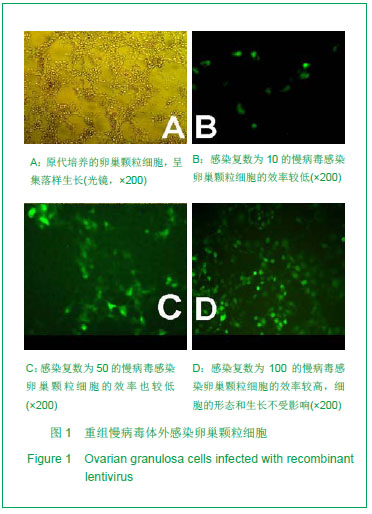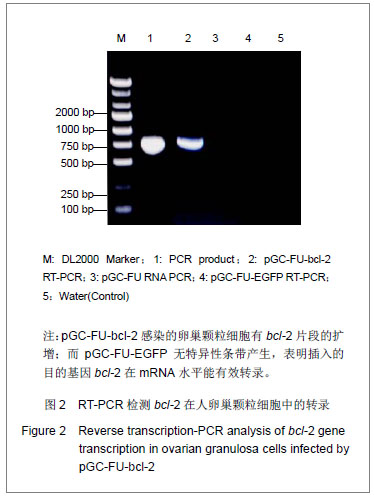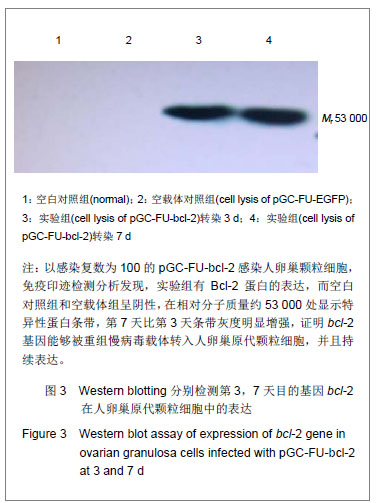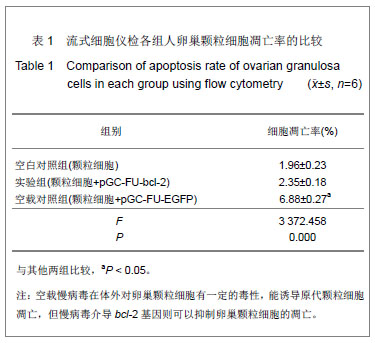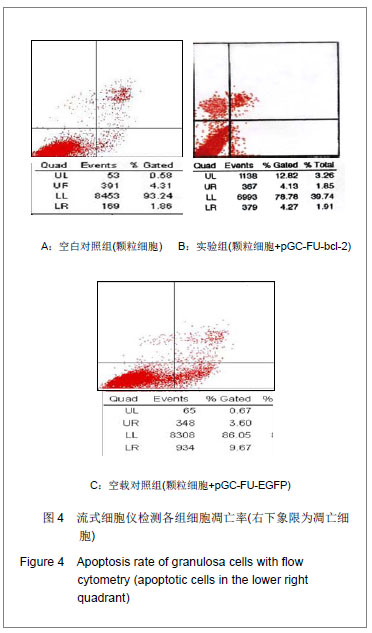| [1]Maman E, Prokopis K, Levron J, et al. Does controlled ovarian stimulation prior to chemotherapy increase primordial follicle loss and diminish ovarian reserve? An animal study. Hum Reprod. 2009;24(1):206-210.[2]Lie Fong S, Lugtenburg PJ, Schipper I, et al. Anti-müllerian hormone as a marker of ovarian function in women after chemotherapy and radiotherapy for haematological malignancies. Hum Reprod. 2008;23(3):674-678.[3]Mathelin C, Brettes JP, Diemunsch P. Premature ovarian failure after chemotherapy for breast cancer.Bull Cancer. 2008;95(4):403-412.[4]Sasagawa S, Shimizu Y, Nagaoka T, et al. Dienogest, a selective progestin, reduces plasma estradiol level through induction of apoptosis of granulosa cells in the ovarian dominant follicle without follicle-stimulating hormone suppression in monkeys.J Endocrinol Invest. 2008;31(7):636-641.[5]Yuan P, Bartlam M, Lou Z,et al. Crystal structure of an avian influenza polymerase PA(N) reveals an endonuclease active site.Nature. 2009;458(7240):909-913.[6]王雪峰,何援利. 大鼠B细胞淋巴瘤-2基因的克隆及其慢病毒表达载体的构建[J].解放军医学杂志,2009,34(1):51-54.[7]郜虹媛,匡延平. IVF-ET中促性腺激素释放激素激动剂的超促排卵应用与剂量研究[J].生殖与避孕,2012,32(6):403-407. [8]王国鹏,罗凌惠,谢静,等.慢病毒载体和腺病毒载体转染原代培养的螺旋神经节细胞的比较[J].临床耳鼻咽喉头颈外科杂志,2011, 25(4):172-175. [9]陈彩云,刘亚京,牛忠英.慢病毒载体的研究进展及应用[J].口腔颌面修复学杂志,2012,13(2):117-120.[10]Engelbert D, Schnerch D, Baumgarten A,et al.The ubiquitin ligase APC(Cdh1) is required to maintain genome integrity in primary human cells.Oncogene. 2008;27(7):907-917.[11]Yew NS, Przybylska M, Ziegler RJ,et al. High and sustained transgene expression in vivo from plasmid vectors containing a hybrid ubiquitin promoter. Mol Ther. 2001;4(1):75-82.[12]Conaway RC, Brower CS, Conaway JW. Emerging roles of ubiquitin in transcription regulation. Science. 2002;296 (5571): 1254-1258.[13]Stanley BJ, Ehrlich ES, Short L,et al. Structural insight into the human immunodeficiency virus Vif SOCS box and its role in human E3 ubiquitin ligase assembly. J Virol. 2008;82(17): 8656-8663.[14]Böcker W, Rossmann O, Docheva D,et al. Quantitative polymerase chain reaction as a reliable method to determine functional lentiviral titer after ex vivo gene transfer in human mesenchymal stem cells.J Gene Med. 2007;9(7):585-595.[15]Wang YY, Yang Y, Chen Q,et al.Simultaneous knockdown of p18INK4C, p27Kip1 and MAD1 via RNA interference results in the expansion of long-term culture-initiating cells of murine bone marrow cells in vitro.Acta Biochim Biophys Sin (Shanghai). 2008;40(8):711-720.[16]杨萍,严金川,刘培晶.siRNA反向转染法提高原代悬浮细胞转染效率的应用[J].江苏大学学报:医学版,2010,20(3):267-269.[17]李华玲,周晓霞.阳离子脂质体转染人类骨骼肌原代细胞的初步研究[J].生物学杂志,2006,23(6):8-10.[18]张余琴,林晓琳,贾俊双,等. 红色荧光蛋白和荧光素酶双报告基因转基因小鼠的建立[J].中国癌症杂志,2012,22(5):321-328.[19]王露露,刘勤,周晓杨,等.慢病毒介导HLA-G转基因小鼠的建立[J]. 第三军医大学学报,2012,34(14):1392-1396.[20]Monniaux D. Oocyte apoptosis and evolution of ovarian reserve. Gynecol Obstet Fertil. 2002;30(10):822-826.[21]Wang X, Wang Y, Kim HP, et al. Carbon monoxide protects against hyperoxia-induced endothelial cell apoptosis by inhibiting reactive oxygen species formation.J Biol Chem. 2007;282(3):1718-1726.[22]Rho GJ, Kim DS. Influence of in vitro oxygen concentrations on preimplantation embryo development, gene expression and production of Hanwoo calves following embryo transfer. Mol Reprod Dev. 2007;74(4):486-496.[23]Gupta MK, Uhm SJ, Han DW, et al. Embryo quality and production efficiency of porcine parthenotes is improved by phytohemagglutinin. Mol Reprod Dev. 2007;74(4):435-444..[24]孙懿,胡志德,黄元兰,等. IL-22抑制ox-LDL诱导的CRL-1730细胞凋亡并上调其Bcl-2表达[J].第二军医大学学报,2011,32(3): 233-237.[25]朱华,胡燕,帅茨霞,等. survivin、bcl-2在宫颈癌和癌前病变组织中的表达及与人乳头瘤病毒16/18感染的相关性[J]. 中华医学杂志,2010,90(7):469-473.[26]Wang X, Wang Y, Kim HP,et al. Carbon monoxide protects against hyperoxia-induced endothelial cell apoptosis by inhibiting reactive oxygen species formation.J Biol Chem. 2007;282(3):1718-1726.[27]Orike N, Middleton G, Borthwick E,et al. Role of PI 3-kinase, Akt and Bcl-2-related proteins in sustaining the survival of neurotrophic factor-independent adult sympathetic neurons.J Cell Biol. 2001;154(5):995-1005.[28]Vairo G, Innes KM, Adams JM. Bcl-2 has a cell cycle inhibitory function separable from its enhancement of cell survival. Oncogene. 1996;13(7):1511-1519.[29]Baghdassarian N, Bertrand Y, Ffrench P,et al. Role of BCL-2 and cell cycle regulatory proteins for corticosensitivity assessment in childhood acute lymphoblastic leukaemia. Br J Haematol. 2000;109(1):109-116.[30]Zhou W, Liu J, Liao L,et al. Effect of bisphenol A on steroid hormone production in rat ovarian theca-interstitial and granulosa cells.Mol Cell Endocrinol. 2008;283(1-2):12-18.[31]Aerts JM, De Clercq JB, Andries S,et al. Follicle survival and growth to antral stages in short-term murine ovarian cortical transplants after Cryologic solid surface vitrification or slow-rate freezing.Cryobiology. 2008;57(2):163-169.[32]Aerts JM, Bols PE. Ovarian follicular dynamics: a review with emphasis on the bovine species. Part I: Folliculogenesis and pre-antral follicle development. Reprod Domest Anim. 2010; 45(1):171-179.[33]Santos HB, Thomé RG, Arantes FP,et al. Ovarian follicular atresia is mediated by heterophagy, autophagy, and apoptosis in Prochilodus argenteus and Leporinus taeniatus (Teleostei: Characiformes).Theriogenology. 2008;70(9): 1449-1460.[34]Chitnis SS, Navlakhe RM, Shinde GC,et al. Granulosa cell apoptosis induced by a novel FSH binding inhibitory peptide from human ovarian follicular fluid. J Histochem Cytochem. 2008;56(11):961-968.[35]Yu YS, Sui HS, Han ZB,et al. Apoptosis in granulosa cells during follicular atresia: relationship with steroids and insulin-like growth factors.Cell Res. 2004;14(4):341-346.[36]Tilly JL, Tilly KI, Kenton ML,et al. Expression of members of the bcl-2 gene family in the immature rat ovary: equine chorionic gonadotropin-mediated inhibition of granulosa cell apoptosis is associated with decreased bax and constitutive bcl-2 and bcl-xlong messenger ribonucleic acid levels. Endocrinology. 1995;136(1):232-241.[37]Choi D, Hwang S, Lee E,et al. Expression of mitochondria-dependent apoptosis genes (p53, Bax, and Bcl-2) in rat granulosa cells during follicular development.J Soc Gynecol Investig. 2004;11(5):311-317.[38]Yoshida Y, Hosokawa K, Dantes A,et al. Theophylline and cisplatin synergize in down regulation of BCL-2 induction of apoptosis in human granulosa cells transformed by a mutated p53 (p53 val135) and Ha-ras oncogene.Int J Oncol. 2000; 17(2):227-235.[39]姜勋平,周东蕊,杨利国,等.鸡Bcl-2基因的克隆及其对卵泡颗粒细胞凋亡的影响[J].中国兽医学报,2002,22(1):87-89. |
